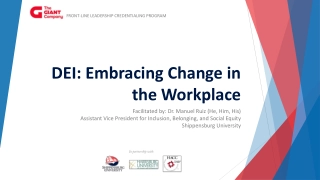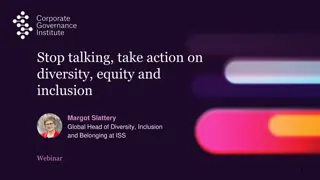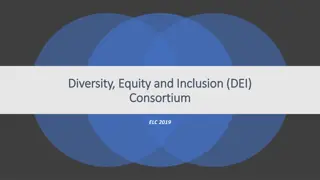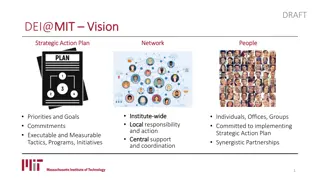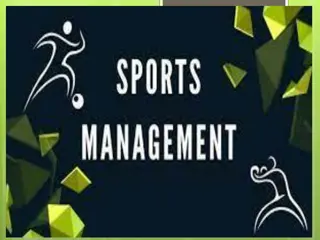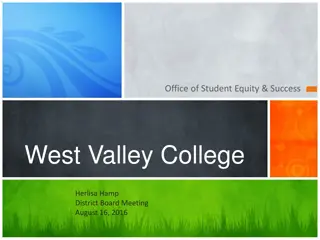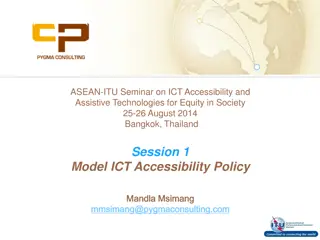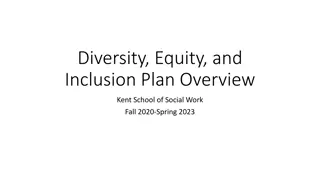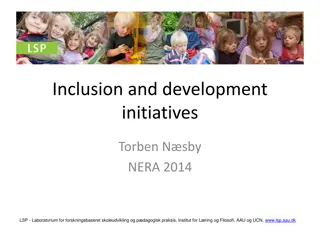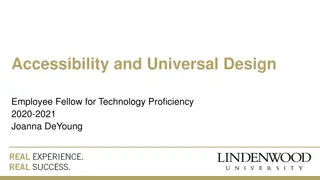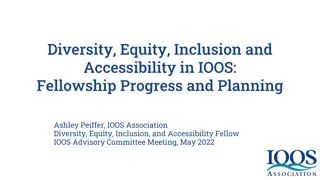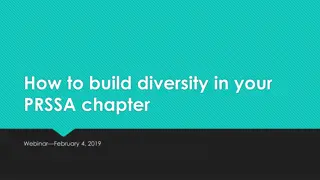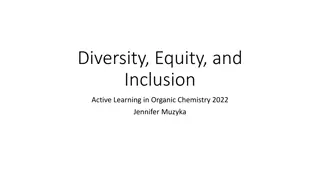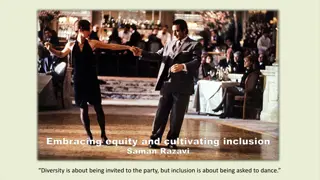Understanding Diversity, Equity, Inclusion, and Accessibility in Sports
Explore the concepts of diversity, equity, inclusion, and accessibility in sports. Learn the differences between equality and equity, and how to implement practices that create equal opportunities for all athletes. Address common myths around disabled athletes and celebrate diversity in sports for enhanced performance and inclusivity.
Download Presentation

Please find below an Image/Link to download the presentation.
The content on the website is provided AS IS for your information and personal use only. It may not be sold, licensed, or shared on other websites without obtaining consent from the author. Download presentation by click this link. If you encounter any issues during the download, it is possible that the publisher has removed the file from their server.
E N D
Presentation Transcript
Equality vs Equity Equality Providing consistent and equal care throughout Equity - Providing care that does not vary in quality because of personal characteristics such as gender, ethnicity, geographic location, and socioeconomic status.
How do these differ? Equality providing the entire time with the same pair of shoes Equity providing everyone with a pair of shoes that fit Equity takes into account history and biological factors to create a level playing field and equal opportunity for all
How to start Identifying individual needs of your student-athletes is the first step in equitable care Ask the student-athlete size preference, equipment modifications, or other necessary items they may need in order to be successful Reflection on past and current treatment of athletes is critical for enhanced future performance Identify any unconscious bias you may have towards preferential treatment of one race, ethnicity, or gender Make efforts to diversify your coaches, support staff, and athletes to create an environment of inclusion
How to help Arm yourself with knowledge about historical limiting factors Much of the battle fought today is due to discrimination and inequality at the beginning of civilization Make a conscious effort for diversity in your staff and recruitment Perform a needs assessment for all athletes on a yearly basis, noting trends and consistent reports among similar groups Never assume someone s preferences based on identity, race, gender, or socioeconomic status
Myths Disabled athletes are not as talented as nondisabled persons Given the proper adjustments, disabled athletes can compete alongside any other persons You should avoid talking about someone s disability or ethnicity in order to treat everyone as equals Ignoring someone s history means ignoring a vital portion of who they are Have open and honest conversations with your athletes about what their disability is and how you can best help them compete, as well as acknowledging someone s ethnic backgrounds and helping them celebrate their heritage and culture
DEI Hiring Practices Things to keep at the forefront Cognitive Diversity Be aware of habits of hiring people who think like you Be purposeful in your search Inclusion Make sure sound DEI practices are in your included in your processes
Resources available [Insert your Athletic Department info] Athletic department mental health services Campus counseling center 988 Suicide and Crisis Lifeline (call and text) The Ross Initiative in Sports for Equality (RISE) NCAA Office of Inclusion NCAA Champions of Respect-Inclusion of LGBTQ Student-Athletes and Staff in NCAA Programs Racial Equality Tools Glossary - https://www.racialequitytools.org/glossary#diversity Anti-Racist Resources, Sports Edition - https://docs.google.com/document/u/1/d/1pJsFEMh8qdT8an_yHsQ4gptX1Beb1G2BSe mjkaupZOw/mobilebasic?fbclid=IwAR01PnKQ3Q6rJJ7V6KyZSm8EwsTCFcVThWFzn7u2G FZ7kKfs21AWYGtbNHg Jen Fry Talks - https://jenfrytalks.com/resources/
References Ross Initiative in Sports for Equality Robert Wood Johnson Foundation Team USA Diversity, Equity, and Inclusion


